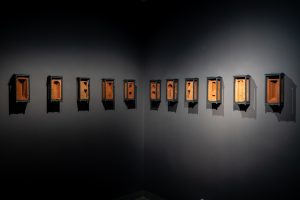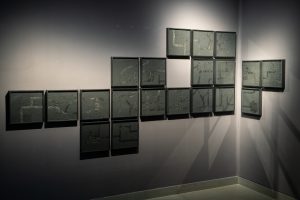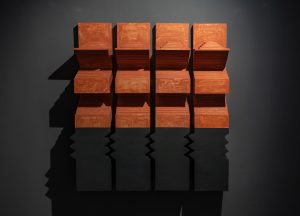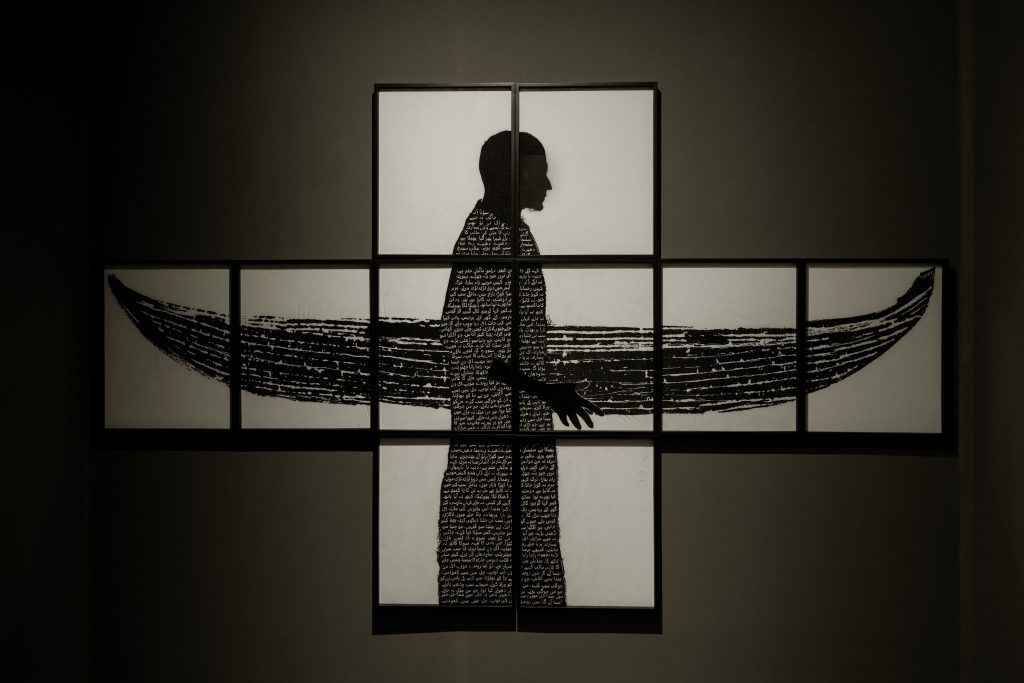Abhishek Dixit

A show has opened in New Delhi amid the India Art Fair, which critically examines the value of a personal relationship with space and allows you to reflect on the philosophy associated with it. The complexity of understanding the spaces in terms of lines, shapes, and structures in a three-dimensional area has been intensely scrutinized and presented by the artist Debashish Mukherjee in his solo exhibition “Whispering Lanes.” His works are a fusion of all his experiences and memories gained by living within the houses and roaming the streets of the city of Banaras. Debasish Mukherjee makes use of these limitations, the essential aspects of the spaces, the line, the architecture, and the everyday objects to create visual metaphors in an effort to uncover the dormant stories of his past.
Debashish spent his childhood at his maternal grandmother’s house in Banaras and later his interest grew in painting; therefore, he joined Banaras Hindu University for a formal course in painting and spent some of the most formative and constructive years of his life in the city. Painting, textiles, and sculptural installations are some of the media he experiments with, reflecting the language of Abstract Expressionism and Structural Minimalism. He was inspired by the mysteries that the city of Banaras holds and worked majorly on the silhouettes of the ghats, the lanes, and the structures. Debashish’s roots being in Banaras, there is a feeling of affection and warmth in his work. Curator Siddhi Shailendra shares her thoughts on the works, she finds it so deeply rooted in the city and the works are a psychological reflection of the exploration of space as the most intimate entity.

This silk print contains an archive of the names of Banaras’ localities and mohallas in 1781, the year these names were documented; many of these places still use these names. It is also possible to find these names if one closely observes the pillar-like structure at the center of the Persistence of memory. Mukherjee uses the contradictory nature of the medium in these two works to demonstrate how our history is shaped by duality and contention. In this exhibition, the essence of the city is reflected in both a mixture of memories from the past and a reflection of the present. Work like Monsoon Fables and Pakka Mahal, whose history is rooted in countless cycles of destruction and revival, refer to the recurring displacement and resettlement of the population over time. Within the motif of the almirah wide open and submerged, the carved-out bricks and grids represent sites and lands that conjure up memories of distant lands.

Mukherjee’s practice investigates the relationship between objects, architecture, and our memories. Similar to Gaston Bachelard in his text ‘The Poetics of Space’, Mukherjee invokes areas of intimacy and secrets through the iconography of a shelter, closets, and drawers. Through the reactivation of suppressed memories, one is able to contemplate and confront our most basic childhood experiences of safety and play. The work is on display at Akar Prakar gallery until March 17 and is a must-visit experience for anyone who loves to inquire about the architectural magnificence.






